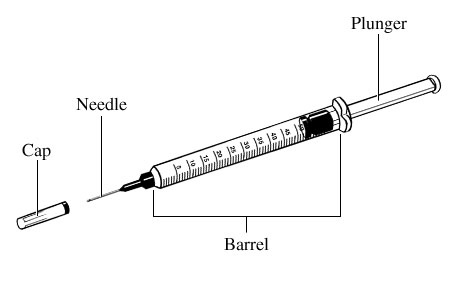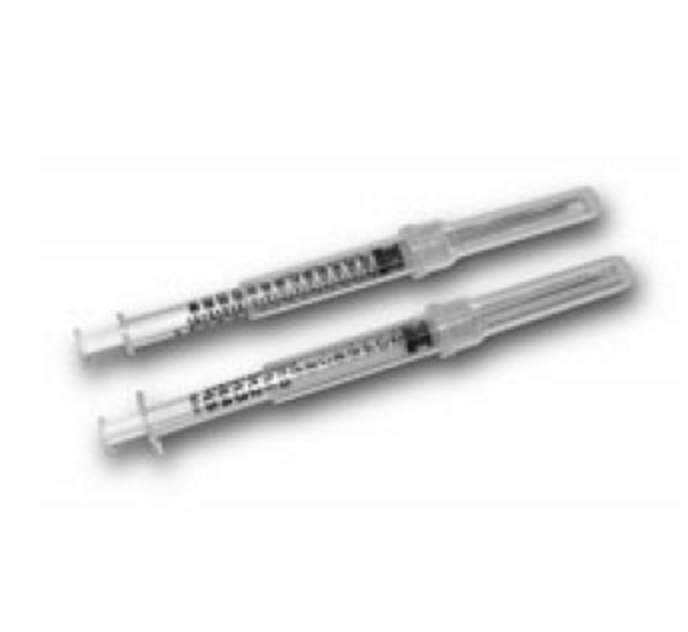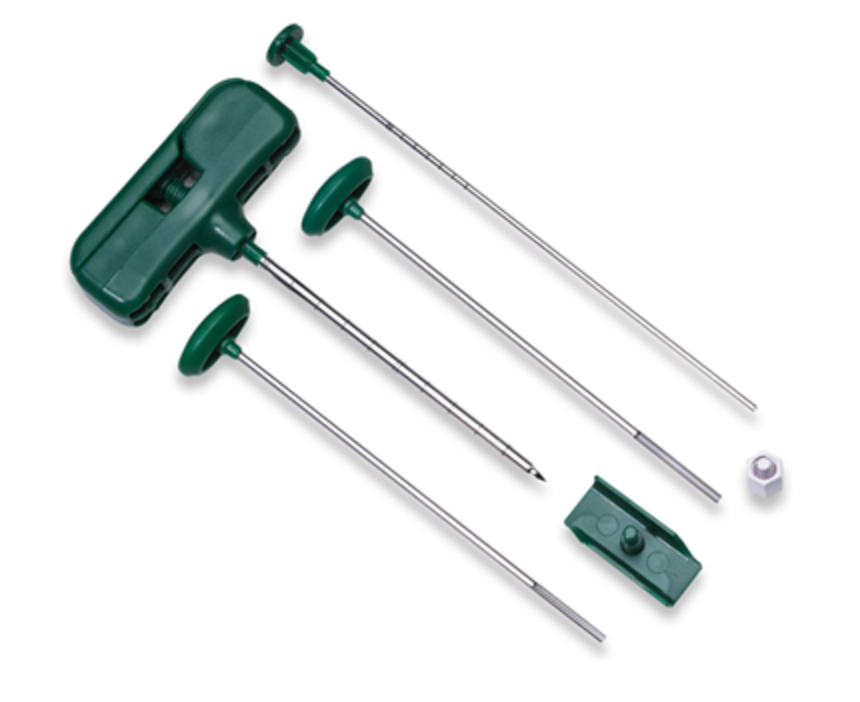

Disposable Syringes: Definition, History, Types, Uses, & Dangers
What is a Disposable Syringe?
The disposable syringe is one of the most important and ubiquitous pieces of medical equipment known to man. Construction wise, syringes are uniform and simple. In their most basic form, they consists only of a needle and a pump. The pump is built of a tube and a plunger. The plunger creates suction if it is pulled and pressure when it is pushed. The purpose of the syringe is to either inject or extract fluids through layers of skin, flesh, veins and sometimes even bone. The tube almost universally has a measurement gauge for the contents in order to ensure the precision of the injection or extraction. Almost all syringes are single use and are therefore typically sold in cases as opposed to individually.
History of Disposable Syringes
While the need to inject substances into the body is relatively new, the need to remove harmful substances predates such procedures. One of the first recorded syringes comes from the ancient Roman medical documentarian, Aulus Cornelius Celsus in his De Medicina, an encyclopedia of the medical knowledge of the time. The next recorded example of a syringe comes from the Middle East in the 9th century. Ammar ibn Ali al-Mawsili created a syringe to remove cataracts from the eye. Francis Rand is credited with the invention of the hollow needle and making the first “beneath the skin” injection in 1844. Charles Rothauser of Australia invented the first disposable hypodermic syringe made from plastic in 1949 and it has since become the standard for the medical field.
Types of Disposable Syringes
Depending on their intended use, syringes can come in a wide variety of different shapes and sizes. Syringes made to penetrate bone are not as thin and brittle as those used simply to provide insulin to the blood stream. Despite the variation in size however, the general idea behind the device remains more or less uniform. So what are some of the specific variations?
- Standard U-100 Insulin Syringe: Since insulin needles don’t need to go through muscle, the needles are much smaller. The needles of these syringes are also thinner to decrease pain as they are used with a higher degree of regularity. They also have a low dead space between the syringe hub and the needle to cut down on complications.
- Bone Marrow Syringe: In order to penetrate the bone to extract bone marrow for biopsy or transplant, a large (sometimes 20mL) syringe is needed. The needle must be long enough to get through skin muscle and thick enough to not break on the bone. Because of these requirements bone marrow procedures are particularly painful.
- Catheters: A syringe attached to a long tube and receptacle is the basic makeup of a catheter which has various uses. The most common perception of the tool is the urinary catheter, which evacuates urine from incapacitated patients.
Delivery / Uses
Not all injections or extractions are created equal. The human body is an intricate piece of biomachinery. Poking and prodding in the wrong place can have disastrous ramifications. Know where you are going and while you are there, know the terminology:
- Intradermic
- Into the skin
- Tattoos are created via numerous intradermic injections
- Subcutaneous
- Under the skin and above the muscle
- This type of poke is used to administer morphine and insulin
- Intramuscular
- Below the skin and into the muscle
- A wide variety of drugs can be administered this way including: various vaccines, penicillin and anabolic steroids
- Intravenous
- Into a vein
- Used for blood transfusions and chemotherapy. This is also the injection site for most injectable controlled substances such as heroin
- Intraosseous
- Through the bone, into the marrow
- Often used to numb bone for procedures, but is still very painful
- Intraperitoneal
- Into the body cavity
- Used for another more controversial version of chemotherapy used for ovarian cancer
- Intrathecal
- Into the cerebrospinal fluid via the subarachnoid space of the spinal canal
- Used to numb the spin, medications used to manage pain, and yet another route for chemotherapy
- Epidural
- Aptly enough, the injection goes into the epidural space of the spine
- This route is famously used during childbirth to lessen the pain
- Intracardiac
- Directly into the heart
- This method is often dramatized in film and television but is hardly ever used by medical professionals today
- Intra-articular
- Into the joints
- Used to treat arthritis, gout and to remove excess fluid.
- Intracavernous
- Into the base of the penis
- Used to treat erectile dysfunction and priapism
- Intravitreal
- Into the eye.
Dangers of Disposable Syringes
Syringes are a vital part of the medical field but they do present dangers in and of themselves. Air getting into the bloodstream can have fatal effects. Intravenous injections of air in even small amounts can create an embolism or bubble that if allowed to reach your heart could create an irregularity. This irregularity throws off the rhythm of the heart, in worst cases causing it to stop. The danger of this is easily mitigated by first extracting any excess air before injection. Hold the syringe vertical with the needle up and push the plunger until a small amount of the substance being injected comes out.
The more prevalent danger is that of cross contamination. This is the reason that the overwhelming majority of syringes are disposable. In some cases, washing the materials just does not do the trick, and even more dangerous is the practice of sharing needles. It can lead to the spread of diseases such as hepatitis and HIV. The practice is unthinkable in a medical setting but impossible to regulate among users of intravenous drugs.
Stock Up
It would not be a stretch to call syringes one of the cruxes of the medical field. Considering that it’s paramount that they are single use, I suggest you buy in bulk.




2 thoughts on “Disposable Syringes: Definition, History, Types, Uses, & Dangers”
Comments are closed.